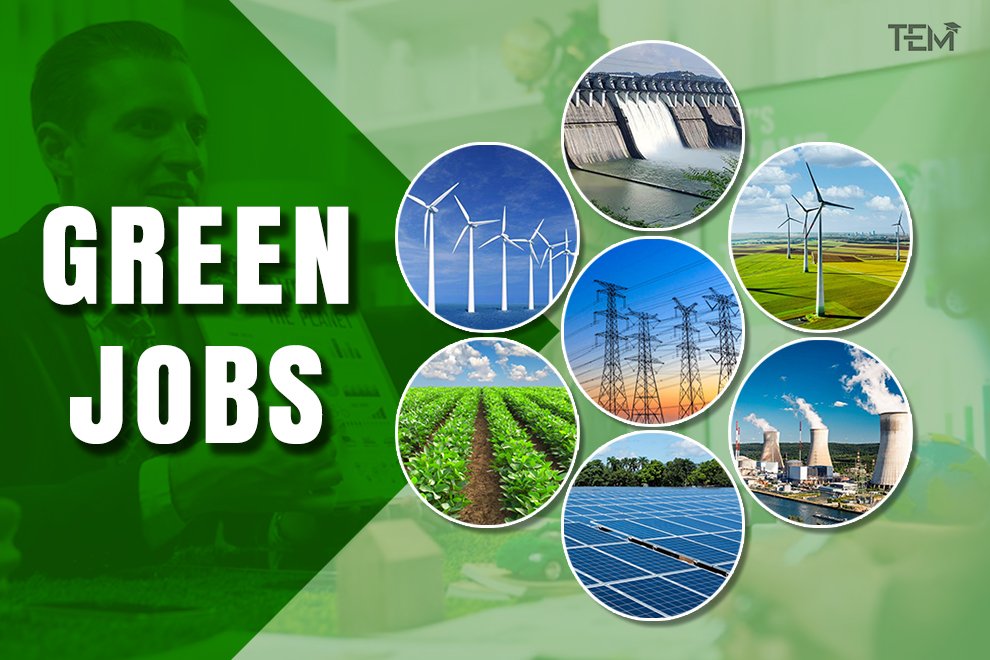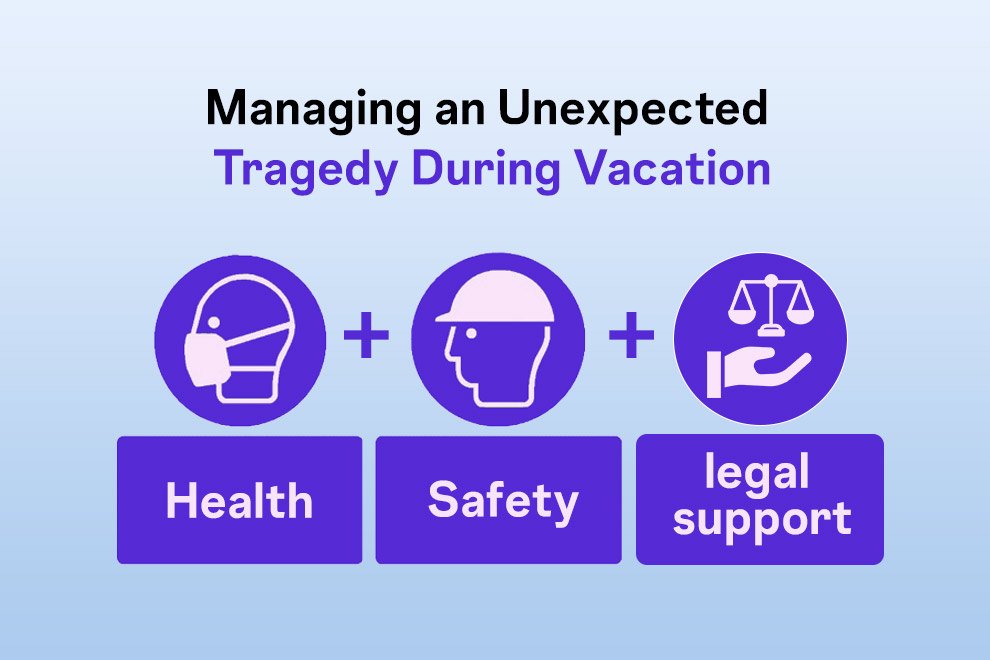The future of work is green! As the world shifts towards sustainable practices, green jobs are taking center stage, offering exciting opportunities for professionals who care about the environment.
From tackling climate change to revolutionizing industries, these careers let you make a difference while succeeding financially. But what exactly are green jobs, what are its objectives, and how did it all start? This blog will let you know all about it! Excited? Let’s build a greener world together.
1. What Are Green Jobs?
Green Jobs are roles that contribute directly to preserving or restoring the environment. These jobs focus on reducing energy consumption, minimizing waste, promoting renewable resources, and promoting sustainable practices across various industries. Simply put, Green Jobs are about making the world a better place while earning a living.
For example, a solar panel technician helps install and maintain solar energy systems, reducing reliance on fossil fuels. Similarly, an environmental consultant advises companies on how to lower their carbon footprint. Green Jobs span a wide range of fields, including renewable energy, water management, sustainable construction, and more.
The International Labour Organization (ILO) defines Green Jobs as those that “reduce the environmental impact of enterprises and economic sectors, ultimately to levels that are sustainable.” From small startups to global corporations, organizations across the board are creating Green Jobs to meet environmental and sustainability goals.
Whether you’re an engineer designing energy-efficient buildings or a farmer practicing organic agriculture, Green Jobs provide meaningful work that aligns with a sustainable future. By choosing this career path, you’re not just earning a paycheck—you’re making a positive impact on the planet.
Here are some Green Jobs

2. The History of Green Jobs
The concept of Green Jobs is not new―it has evolved significantly over the past few decades. The roots of Green Jobs can be traced back to the environmental movements of the 1960s and 1970s, which raised awareness about pollution, deforestation, and other ecological issues. During this period, the first frameworks for environmental policies and regulations were established, laying the groundwork for what we now call Green Jobs.
The 1992 Earth Summit in Rio de Janeiro marked a significant milestone in the history of Green Jobs. This global event highlighted the need for sustainable development, prompting nations to integrate environmental considerations into their economic policies. As renewable energy technologies like wind and solar gained grip in the early 2000s, the demand for skilled workers in these fields skyrocketed, giving rise to a new wave of Green Jobs.
More recently, the Paris Agreement of 2015 further accelerated the growth of Green Jobs. Countries around the world are committed to reducing greenhouse gas emissions, prompting investments in clean energy and sustainable practices. Initiatives like the European Green Deal and the Inflation Reduction Act in the United States have provided funding and incentives for businesses to create even more Green Jobs.
Today, Green Jobs represents a critical pillar of the global economy. From urban planners designing eco-friendly cities to scientists researching climate-strong crops, Green Jobs are at the forefront of the change to a sustainable future. This evolution highlights the importance of aligning economic growth with environmental protection.
3. The Need for Green Jobs
Why are Green Jobs so essential? The answer lies in the urgent need to address some of the most critical challenges of our time—climate change, resource depletion, and environmental degradation. Green Jobs play a key role in transitioning to a low-carbon economy, ensuring that economic progress doesn’t come at the expense of the planet.
For instance, the global shift to renewable energy is creating a wave in demand for Green Jobs in sectors like solar and wind power. Similarly, industries are increasingly adopting sustainable practices, from waste reduction to energy efficiency, driving the need for skilled professionals who can lead these efforts.
Beyond environmental benefits, Green Jobs also contribute to social and economic goals. They create employment opportunities, improve public health by reducing pollution, and help build strong communities. By investing in Green Jobs, we can make the way for a more sustainable, fair, and prosperous future.
4. Objectives of Green Jobs
Green Jobs aims to achieve a variety of objectives, all of which align with the broader goals of sustainability, economic growth, and environmental protection. Here are the key objectives:
1. Environmental Sustainability
The primary goal of Green Jobs is to protect and preserve the environment. This involves reducing greenhouse gas emissions, conserving natural resources, and promoting biodiversity. For example, jobs in renewable energy sectors like wind and solar help decrease reliance on fossil fuels, thereby lowering carbon emissions.
Another aspect of sustainability is waste management. Green Jobs in this area focus on recycling, composting, and reducing landfill waste. By adopting circular economy principles, industries can minimize waste and maximize resource efficiency.
2. Economic Growth
Green Jobs contribute to economic development by encouraging innovation and creating new markets. The renewable energy sector alone has generated millions of jobs worldwide, from manufacturing solar panels to operating wind farms. Additionally, sustainable industries like organic farming and eco-tourism offer opportunities for local economic growth.
Governments and organizations are investing heavily in green technologies and infrastructure, further pushing job creation. For instance, refitting old buildings to make them energy-efficient not only reduces energy consumption but also creates jobs for architects, engineers, and construction workers.
3. Social Equity
A lesser-known objective of Green Jobs is promoting social equity. These jobs aim to provide fair wages, safe working conditions, and opportunities for marginalized communities. By focusing on inclusivity, Green Jobs helps bridge social and economic gaps.
Programs like green apprenticeships and training initiatives are empowering individuals to acquire the skills needed for sustainable careers. This ensures that the transition to a green economy benefits everyone, not just a select few.
4. Resilience to Climate Change
Green Jobs also play an important role in enhancing stability to climate change. Roles in climate adaptation, such as designing flood-resistant infrastructure or developing drought-resistant crops, are essential for preparing communities to face environmental challenges.
Furthermore, Green Jobs in disaster management and emergency planning help reduce the impact of climate-related events. By focusing on preparedness and strength, these jobs contribute to long-term sustainability.
End Note
Green jobs are more than just careers—they’re a commitment to a sustainable and succeeding future. By choosing a path in renewable energy, conservation, or eco-innovation, you’re contributing to the planet’s well-being while securing a prosperous career for yourself. Whether you’re just starting or shifting to a greener path, the opportunities are endless.
So, why wait? If you found this blog helpful in understanding the concept of green jobs, share it with all your friends, begin your journey today, and turn your passion for sustainability into a purposeful profession. Together, let’s make the world a greener place to live.
Remember, every effort counts toward building a sustainable future.
FAQs
- Why are green jobs important?
Green jobs play a key role in fighting climate change and creating a sustainable future. They push innovation, reduce environmental harm, and support global efforts toward achieving net-zero carbon emissions.
- How can I start a career in green jobs?
To start a career in green jobs, focus on gaining relevant skills like energy management, environmental science, or sustainable engineering. Certifications and internships in green industries can also help you stand out to potential employers.
- What industries offer the most green jobs?
Industries like renewable energy (solar, wind), waste recycling, green construction, and environmental consulting offer the most green jobs. These fields are growing rapidly due to increasing demand for sustainable practices.










